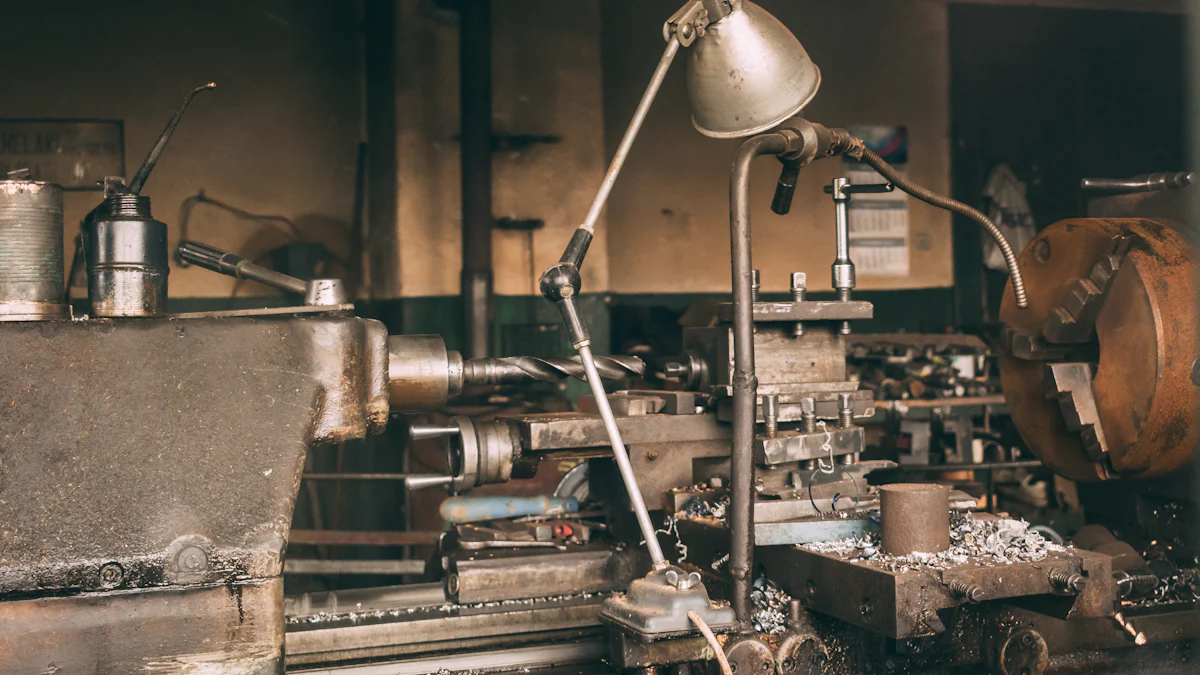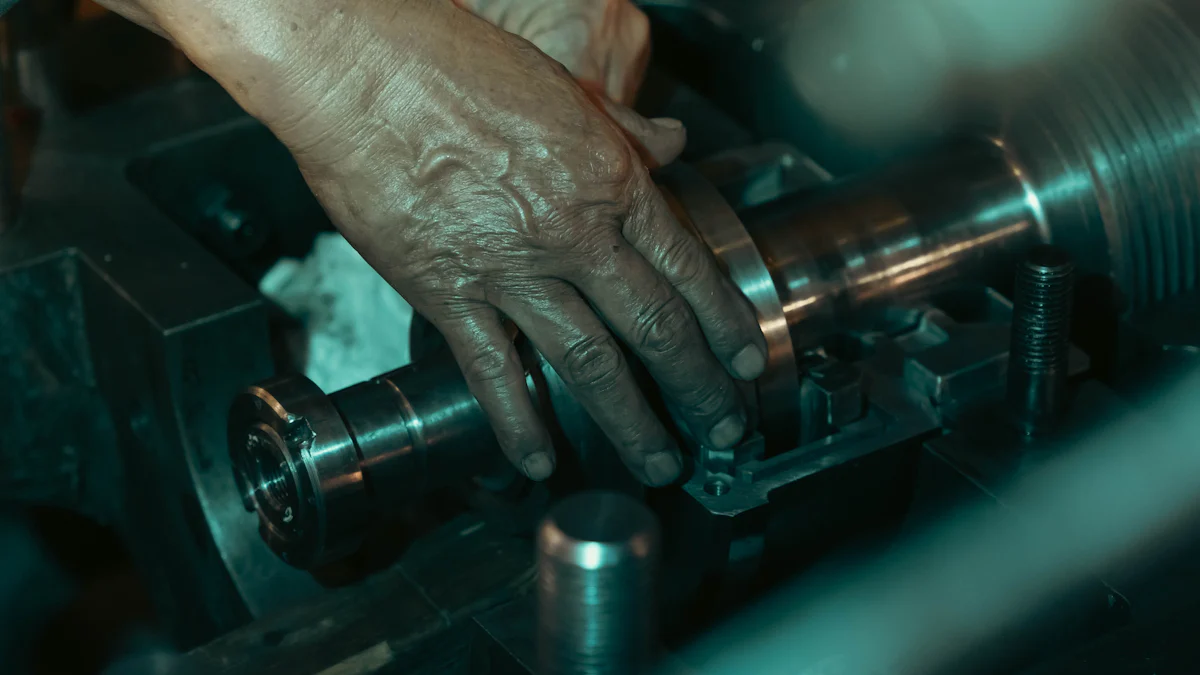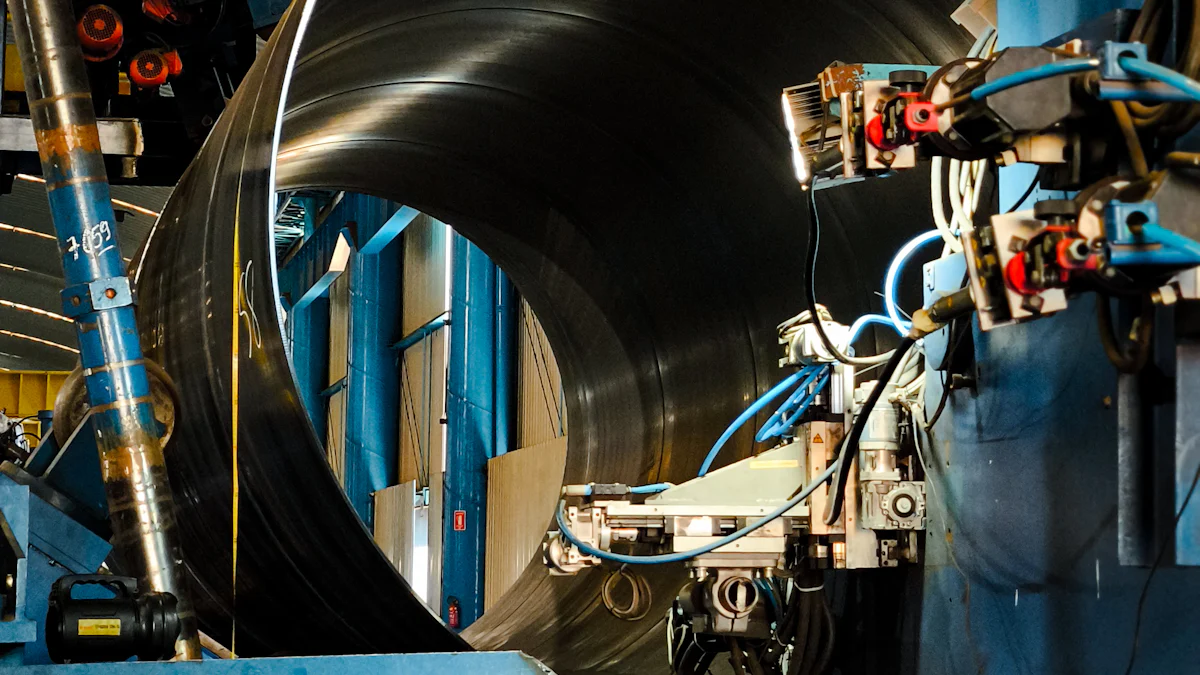
Proper maintenance keeps your lighter making machine running efficiently and safely. Regular care prevents costly breakdowns and ensures smooth operations. You can reduce downtime and improve productivity by addressing issues early. Maintenance also extends the lifespan of your equipment, including the Appending Machine, saving you money in the long run.
Key Takeaways
- Check the machine often to find small problems early. Use a list to make sure you check important parts.
- Add oil to moving parts as the maker suggests. This lowers friction, stops overheating, and makes the machine last longer.
- Write down all maintenance work in a log. This helps spot trends and ensures you don’t miss anything.
Regular Inspections
Regular inspections are essential for keeping your lighter making machine in top condition. By checking the machine frequently, you can catch small issues before they turn into costly problems. Inspections also ensure the machine operates safely and efficiently.
Identifying Wear and Tear
Look for signs of wear and tear during your inspections. Components like belts, gears, and seals often show visible damage over time. Cracks, fraying, or unusual discoloration may indicate that a part needs attention. Pay close attention to areas that experience constant friction or pressure. These parts tend to wear out faster. If you notice any irregularities, address them immediately to prevent further damage.
Tip: Create a checklist for your inspections. This ensures you don’t miss any critical areas of the machine.
Examining Moving Parts for Damage
Moving parts are the heart of your lighter making machine. Examine them closely for any signs of damage. Look for loose bolts, misaligned components, or unusual noises during operation. These could signal underlying issues. Check the bearings, shafts, and other moving elements for smooth operation. If a part feels stiff or wobbly, it might need lubrication or replacement. Regularly inspecting these parts helps maintain the machine’s performance and reduces the risk of breakdowns.
Note: Always turn off the machine and disconnect it from power before inspecting moving parts. This ensures your safety.
Preventive Maintenance
Lubricating Moving Parts
Lubrication plays a vital role in keeping your lighter making machine running smoothly. Moving parts generate friction, which can lead to wear and tear over time. Applying the right lubricant reduces friction and prevents overheating. This simple step ensures the machine operates efficiently and minimizes the risk of unexpected breakdowns.
You should follow the manufacturer’s guidelines when selecting a lubricant. Different parts may require specific types of lubricants, such as oil or grease. Apply the lubricant evenly to all moving components, including gears, bearings, and shafts. Avoid over-lubricating, as excess lubricant can attract dust and debris, leading to clogging. Regular lubrication not only extends the lifespan of the parts but also improves the overall performance of the machine.
Tip: Schedule lubrication as part of your routine maintenance to avoid missing this critical step.
Replacing Worn Components on Time
Worn components can compromise the efficiency and safety of your lighter making machine. Delaying replacement increases the risk of further damage to other parts. Inspect components like belts, seals, and gears regularly. Replace them as soon as you notice signs of wear, such as cracks, fraying, or deformation.
Using high-quality replacement parts is essential. Inferior components may fail quickly, leading to additional repairs. Always source parts from trusted suppliers to ensure compatibility and durability. Timely replacement of worn components not only prevents costly repairs but also keeps your machine running at peak performance.
Note: Keep spare parts on hand to avoid delays during replacements.
Cleaning Practices

Removing Dust and Debris Safely
Keeping your lighter making machine clean is essential for its efficiency and longevity. Dust and debris can accumulate over time, causing blockages and reducing performance. You should remove these contaminants regularly to maintain smooth operations. Always turn off the machine and disconnect it from the power source before cleaning. This step ensures your safety and prevents accidental damage.
Use a soft brush or compressed air to remove dust from hard-to-reach areas. Avoid using sharp objects, as they can scratch or damage delicate components. Pay special attention to vents, gears, and other areas where debris tends to collect. If you notice stubborn buildup, use a damp cloth to wipe it away gently. Regular cleaning prevents debris from interfering with the machine’s moving parts and ensures consistent performance.
Tip: Clean your machine in a well-ventilated area to avoid inhaling dust particles.
Using Appropriate Cleaning Tools and Agents
The right tools and cleaning agents make a significant difference in maintaining your lighter making machine. Using improper tools can damage sensitive parts or leave residues that affect performance. Select tools like microfiber cloths, soft brushes, and non-abrasive sponges for cleaning. These tools are gentle on the machine’s surface and effective at removing dirt.
When choosing cleaning agents, stick to those recommended by the manufacturer. Avoid harsh chemicals, as they can corrode metal parts or degrade plastic components. For stubborn grease or grime, use a mild detergent diluted with water. Apply the cleaning agent sparingly and wipe it off completely to prevent residue buildup. Proper cleaning tools and agents help preserve the machine’s condition and extend its lifespan.
Note: Test any new cleaning agent on a small, inconspicuous area before applying it to the entire machine.
Quality Spare Parts

Choosing Trusted Suppliers
Using high-quality spare parts is essential for keeping your lighter making machine running efficiently. You should always source these parts from trusted suppliers. Reliable suppliers provide components that meet the required standards and specifications. This ensures compatibility with your machine and reduces the risk of malfunctions.
When selecting a supplier, research their reputation. Look for reviews or testimonials from other customers. A supplier with positive feedback is more likely to deliver dependable products. You can also ask for certifications or guarantees to confirm the quality of their parts. Building a relationship with a trusted supplier can save you time and money in the long run.
Tip: Keep a list of verified suppliers handy. This makes it easier to order parts when needed.
Avoiding Counterfeit Parts
Counterfeit parts can harm your machine and compromise its performance. These parts often lack the durability and precision of genuine components. Using them may lead to frequent breakdowns or even permanent damage to your equipment.
To avoid counterfeit parts, inspect the packaging and labeling carefully. Genuine parts usually come with clear branding and serial numbers. If a deal seems too good to be true, it probably is. Low prices often indicate counterfeit products. Always purchase parts directly from the manufacturer or an authorized dealer.
Note: Counterfeit parts may void your machine’s warranty. Stick to authentic components to protect your investment.
Operator Training
Providing Hands-On Training
Proper training ensures operators can handle the lighter making machine effectively. You should provide hands-on training sessions to familiarize operators with the machine’s components and functions. Practical experience helps them understand how to operate the machine safely and efficiently.
Start by demonstrating the basic operations. Show how to start, stop, and adjust the machine. Let the operators practice under supervision. Encourage them to ask questions during the session. This approach builds their confidence and reduces the chances of errors during production.
You can also create a step-by-step guide for reference. Include instructions for routine tasks like loading materials, adjusting settings, and performing basic maintenance. A visual guide with diagrams or videos can make the learning process easier.
Tip: Schedule periodic refresher training to keep operators updated on new techniques or machine upgrades.
Teaching Troubleshooting Techniques
Operators should know how to identify and resolve common issues. Teaching troubleshooting techniques minimizes downtime and ensures smooth operations.
Begin by explaining the most frequent problems, such as misaligned parts or unusual noises. Show operators how to inspect the machine and pinpoint the cause of the issue. Provide a checklist of steps to follow when troubleshooting.
Encourage operators to document any recurring problems. This information helps identify patterns and prevent future issues. You can also teach them when to escalate a problem to a technician. Knowing their limits ensures safety and prevents further damage.
Note: Emphasize the importance of turning off the machine before troubleshooting to avoid accidents.
Performance Monitoring
Tracking Metrics with Sensors
Monitoring your lighter making machine’s performance is essential for maintaining efficiency. Sensors play a critical role in tracking key metrics like temperature, speed, and vibration. These devices provide real-time data, helping you identify potential issues before they escalate. For example, a sudden spike in temperature might indicate overheating, while irregular vibrations could signal a misaligned component.
Install sensors in strategic locations on your machine. Focus on areas prone to wear or stress, such as moving parts or heat-generating components. Use sensors that are compatible with your machine to ensure accurate readings. Once installed, connect the sensors to a monitoring system. This setup allows you to view data on a dashboard, making it easier to track performance trends.
Tip: Set up alerts for abnormal readings. This feature notifies you immediately, enabling quick action to prevent damage.
Analyzing Data for Operational Efficiency
Data analysis helps you optimize your machine’s performance. By reviewing sensor data, you can identify patterns and make informed decisions. For instance, consistent drops in speed might indicate the need for lubrication or part replacement. Use this information to adjust your maintenance schedule and improve efficiency.
Leverage software tools to analyze the collected data. These tools can generate reports and highlight areas for improvement. Share these insights with your team to ensure everyone understands the machine’s condition. Regular analysis not only boosts productivity but also extends the lifespan of your equipment.
Note: Keep historical data for reference. Comparing past and current performance helps you spot long-term trends.
Maintenance Logs
Documenting Maintenance Activities
Keeping a detailed maintenance log is essential for managing your lighter making machine effectively. A log helps you track all maintenance tasks, ensuring nothing gets overlooked. Record every activity, including inspections, repairs, and part replacements. This documentation provides a clear history of the machine’s upkeep, which can be invaluable for troubleshooting future issues.
Use a structured format for your log. Include key details like the date, type of maintenance, parts involved, and the name of the technician. For example, you can create a table with columns for each of these categories. This approach makes it easy to review past activities and identify any recurring problems. Digital tools or software can simplify this process further by organizing and storing data securely.
Tip: Update the log immediately after completing a task. Delaying entries increases the risk of forgetting important details.
Identifying Patterns for Proactive Care
Analyzing your maintenance logs helps you spot patterns that could indicate underlying issues. For instance, frequent repairs on a specific component might suggest a design flaw or improper usage. Identifying these trends allows you to address problems before they escalate, saving time and money.
Review the log periodically to look for patterns. Focus on recurring issues, such as repeated part replacements or consistent performance drops. Use this information to adjust your maintenance schedule or improve operator training. Proactive care based on these insights ensures your lighter making machine operates efficiently and avoids unnecessary downtime.
Note: Share your findings with your team. Collaborative efforts lead to better solutions and improved machine performance.
Regular maintenance is essential for keeping your lighter making machine in excellent condition. It reduces downtime, boosts productivity, and extends the machine’s lifespan. By following these tips, you can ensure smooth operations and avoid costly repairs. Start implementing these practices today to achieve long-term success and maximize your machine’s efficiency.
FAQ
What is the best way to schedule maintenance for my lighter making machine?
Create a maintenance calendar. Include tasks like inspections, lubrication, and cleaning. Stick to the manufacturer’s recommended intervals. Use reminders to ensure you never miss a scheduled task.
Tip: Digital tools or apps can simplify scheduling and tracking maintenance tasks.
How do I know if a part needs replacement?
Inspect parts for visible damage like cracks, fraying, or deformation. Listen for unusual noises during operation. If performance drops, check for worn components and replace them promptly.
Note: Always keep spare parts ready to avoid delays during replacements.
Can I use any lubricant for my machine?
No, always follow the manufacturer’s guidelines. Different parts require specific lubricants like oil or grease. Using the wrong type can damage components and reduce efficiency.
Tip: Store lubricants in a clean, dry place to maintain their quality.

